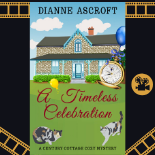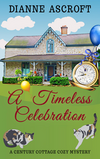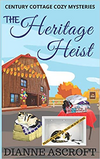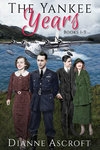Today Phyllis Edgerly Ring joins me to discuss her new historical novel, The Munich Girl.
Welcome Phyllis. I’d like to ask you a few questions about your novel. Shall we get started?
Tell us about your novel.
PER: Protagonist Anna Dahlberg grew up eating family meals under  her father’s war-trophy portrait of Eva Braun. This baffling situation has never been explained, other than that the portrait is a symbol for her father of the Allies’ triumph over the evils of the Third Reich.
her father’s war-trophy portrait of Eva Braun. This baffling situation has never been explained, other than that the portrait is a symbol for her father of the Allies’ triumph over the evils of the Third Reich.
Everything in Anna’s life is turned upside-down when she discovers that her mother had a secret friendship with Hitler’s mistress, and that the portrait is a key to uncovering other secrets, including ones that involve Anna’s own life. An added complication is Hannes, a man whose Third-Reich family history is linked with hers.
What prompted you to write about this historical event or era?
PER: In the years I spent in Germany as both child and adult, some of the kindest, most morally courageous people I knew were those Germans who never wanted the war, or National Socialism, and found creative ways to outlast it and help others as they did. They found ways to endure, not lose heart, and keep faith and hope in times of enormous destruction and suffering. And, they made meaningful choices wherever they could, mostly on behalf of others, more than themselves.
I sensed there was a lot waiting to be revealed under the surface of stories like theirs. I just never imagined that the path to them would be linked with the life of Eva Braun. When I learned that an action she took in the last week of her life saved tens of thousands of Allied prisoners of war, including some British members of my own family, it was a turning point for me. Then her portrait surfaced in my own life and started me on a journey to uncover the kinds of legacies that manage to outlast every war. I wanted to explore the reality that people and situations are always more complex than they appear, and that real relationships, no matter the circumstances around them, can have beneficial effects, even generations later.
How closely did you stick to the historical facts? If you used them loosely, how did you decide whether to deviate from them?
PER: As closely as possible when it came to information from the WWII era and the years that preceded it in Germany. As my husband says, if the characters ride a train on a certain line at a certain time of day, there had to really be one. There’s a lot of factual information in The Munich Girl and I’ve heard from readers that it can be hard to know where the factual leaves off and the fiction begins. It’s easy to know where: in the emotional lives of the characters, including those people that history remembers. That’s where my own attempt to read between the lines of daily life watched for the signs of interior life I could recognize and convey as the story revealed itself.
What research did you do for this book?
PER: I immersed in reading about the time period in Germany in general, as well as Braun’s life and the sphere she moved within as part of Hitler’s life. I spent hours watching the films she had made, looking at many of her photographs. Eventually, I made two trips to the U.S. National Archives to see photo albums of hers that were confiscated by the Allies after the war.
Do you use a mixture of historic figures and invented characters in the novel? Which is more difficult to write? Which to you prefer to write and why?
PER: The story has both, though more fictional characters than ones whose names are known in history. I think there’s an inviting challenge in writing either one. Invented characters act as catalysts for what a writer discovers about the story, so that’s a huge part of the pleasure of coming to know them. Characters who were real people require research accuracy, of course. A paradox I encountered is how very much information published about Eva Braun is inaccurate, including many photos in which someone else, including her own sister, is identified as her.
While she’s not the protagonist, I was looking for more of the emotional story that her life showed. The novel’s goal has never been to try to exonerate or “redeem” her, or how she is perceived. She’s an excellent motif for examining how people, especially women, suppress our own lives, and what forces and factors lead us to do that.
She also offers a way to look at the reality that human beings are complex. She clearly had a conscience, and acted on it, tried to make good choices. She also made ones that served neither herself nor others very well. Do we negate or devalue the contributions that someone makes because they also do things that are misguided, ill-advised, or even personally destructive? Do we not all share this same complexity in experience? These are themes I wanted to explore.
In an historical novel you must vividly re-create a place and people in a bygone era. How did you bring the place and people you are writing about to life?
PER: This was one of the most delightful parts, for me, as I spent extended spans of time in various locales in Germany that are a part of the story. Also, in the time I spent poring over Eva Braun’s photographs and films, I got to know both the interiors and exteriors of the settings as they appeared during the 1930s and ‘40s. A fun element of research was what has become, for me, a growing collection of vintage postcards that show scenes from that era in many of the settings of the story.
The story’s timeline alternates between the period of the war and 50 years after the end of it. The latter represents an important juncture for humanity, I feel, one that invites us to look again, and more deeply, at what remains unrecognized and unresolved, and perhaps overlooked. The year 1995 is also somewhat “historical” in fiction’s terms, because it’s from about that point that technology of the virtual world began asserting itself, rendering a very different human experience in our world today.
There often seems to be more scope in historical novels for male characters rather than female characters. Do you prefer to write one sex or the other. And, if so, why?
PER: I love stories where there’s a balance that hints at what a world with equality might look and feel like. This novel has a lot more scope for female characters. At its heart is a friendship between two women, one of whom was a megalomaniac’s mistress, and the effect their emotional intimacy had in each of their lives, and in the lives of those who came along in a next generation.
But it’s really about two facets of human experience that matter a great deal to me, ones I imagine are still characterized as more “feminine” than “masculine,” though I believe they apply in all of our lives. The first is the inner reunion of “coming home to” our truest self that we all must eventually encounter. The second, and even more intriguing facet, for me, is the mysterious role that others play in that process, often in highly unexpected ways. One particular paradox I discovered might open the door to a deeper conversation about gender equality, one that examines it from the perspective of human virtues. It’s that the qualities of compassion and care that Hitler and the Third Reich sought to demean, reject, and suppress are precisely what he came home to Eva Braun for. This unexamined and very common imbalance, which distorts and abuses the value of the very things we need to heal as a world, continues to play out on a massive, violent scale in human life.
Thank you for answering my questions with such depth and insight, Phyllis.
Readers may learn more about Phyllis and The Munich Girl by visiting her blog and Amazon Author page, and by connecting with her on Facebook, Goodreads and Twitter.
About Phyllis Edgerly Ring: A writer of fiction and nonfiction,  Phyllis Edgerly Ring watches for the noblest possibilities in the human heart. She’s always curious to discover how history, culture, relationship, spirituality, and the natural world influence us and point the way for the human family on its shared journey. Her childhood years in Germany left her with the deep desire to understand the experience of Germans during the Second World War. She has studied plant sciences and ecology, worked as a nurse, been a magazine writer and editor, taught English to kindergartners in China, and served as program coordinator at a Baha’i conference center.
Phyllis Edgerly Ring watches for the noblest possibilities in the human heart. She’s always curious to discover how history, culture, relationship, spirituality, and the natural world influence us and point the way for the human family on its shared journey. Her childhood years in Germany left her with the deep desire to understand the experience of Germans during the Second World War. She has studied plant sciences and ecology, worked as a nurse, been a magazine writer and editor, taught English to kindergartners in China, and served as program coordinator at a Baha’i conference center.













Great interview!
My big thanks to you both for giving The Munich Girl such nice places to visit. 🙂
Pingback: Meeting The Munich Girl | Leaf of the Tree
Pingback: Facts, fiction, and female characters | Leaf of the Tree